When I boarded BART on a beautiful December Saturday to visit Maysha Mohamedi’s San Francisco studio, I found myself on an unexpectedly crowded train — full of Santas.
Yes, it was SantaCon, a day of atonement for all the non-SantaCon days we carelessly enjoy and take for granted. I dug into my earphones, listening to Anna Joy Springer sing, “I wish California would fall in the ocean / and everyone would die.”
Art, as usual, helped.
The next day, I learned the story of SantaCon, which originated in San Francisco as a surrealist homage to an original action undertaken by Danish anarchists in 1974. The anarchists broke into a department store and gave merchandise away for free before being beaten by the Danish police.
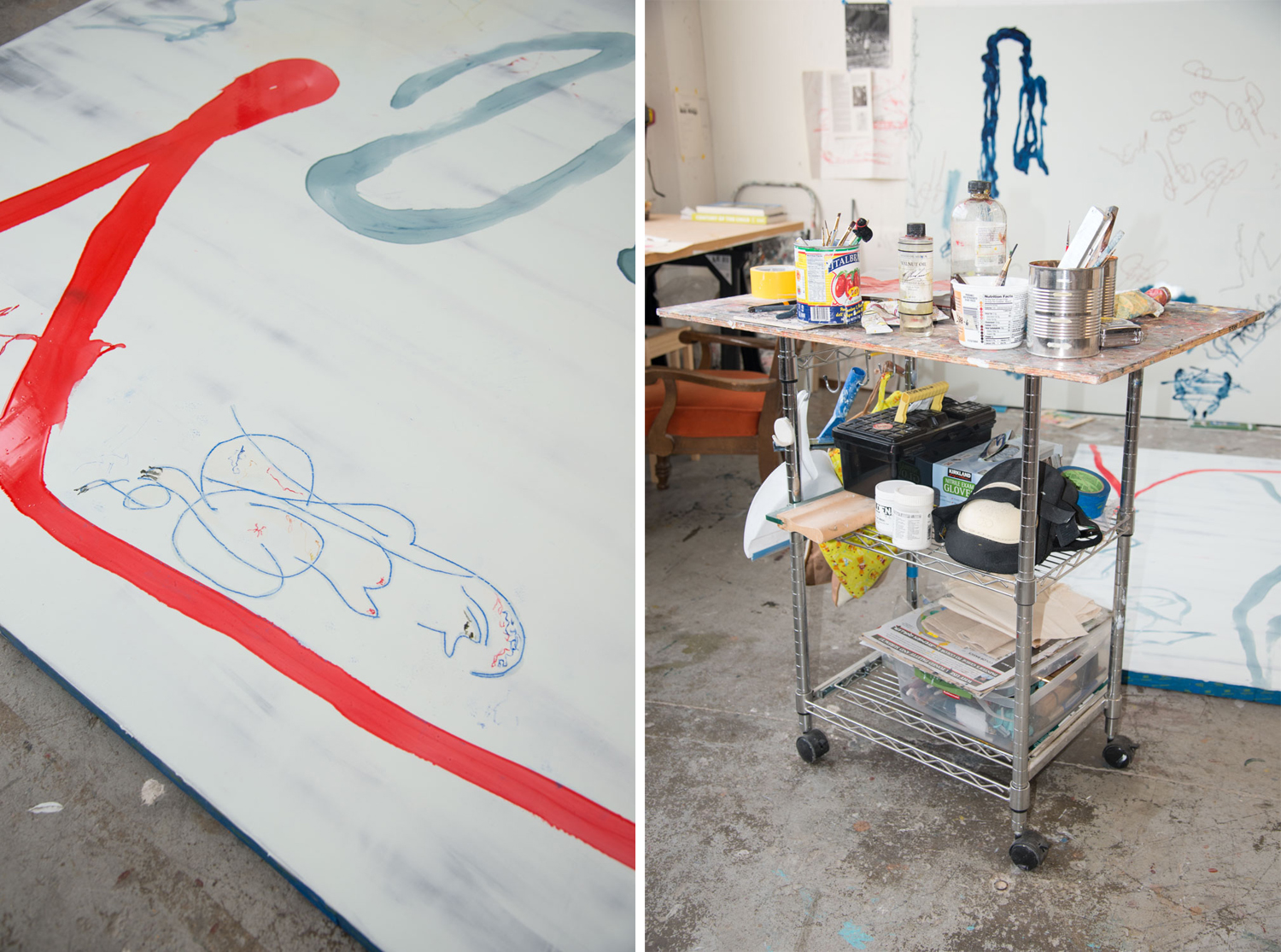
I belabor this terrible history not to connect Mohamedi’s extraordinary work to SantaCon. Rather, what the secret radical history of SantaCon suggests is an allegory for looking at paintings: that even something which appears quite obvious or simple invites a longer and deeper look. The longer I look at her paintings, the more I know about how they came to be made, the richer and more powerful they become for me.
We look at one of these paintings, and she tells me the background is kind of yellow. I feel ashamed and semi color-blind. But with encouragement and time I see it too.
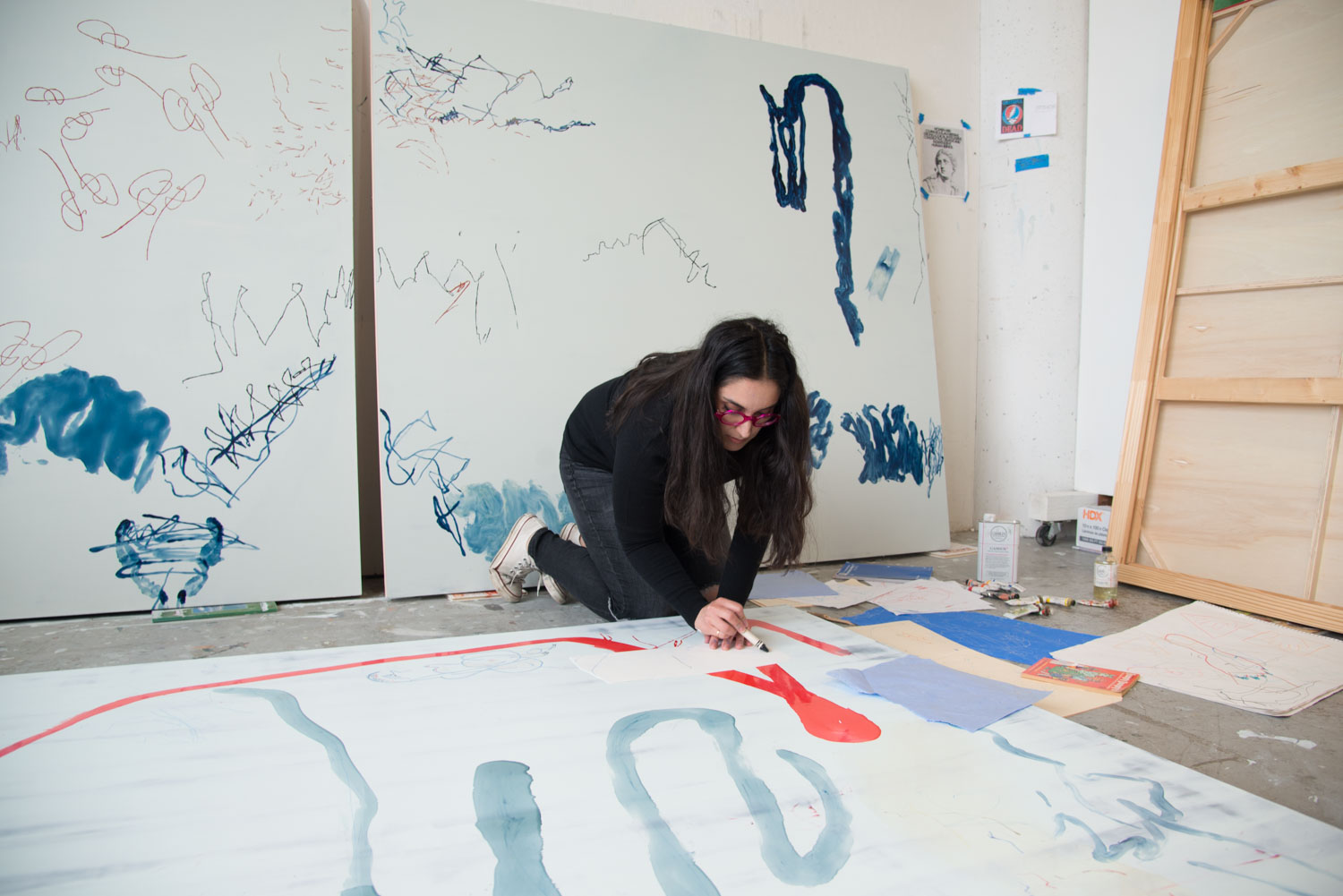
Even at first glance, there is an enormous amount of information in her work. The panels are massive and there is a lot of space in them. Her shapes, while abstract, express an enormous amount of feeling. Long, wide ribbons of oil unfold on the panels with great movement. The marks are almost rhythmic, translating the movements of Mohamedi’s body into a residual kinetic activity on wood. By contrast, thin, wan, etched webs of paint provoke an almost claustrophobic focus.
This complexity of ground and multiplicity of meaning in the marks Mohamedi makes result from the intricacy of her process. Typically, she makes two paintings at a time, laying the gigantic panels on the floor of her studio. She washes them over and over with different textures and colors of tinted gesso. A painting’s ground is extremely layered, and never simply white.
As the successive layers of gesso dry, Mohamedi shifts her attention to the conceptual armature of the piece. “I typically invest these paintings with one idea,” she tells me. This investment, which occurs over time, is a gestational process for shapes and motifs to coalesce.
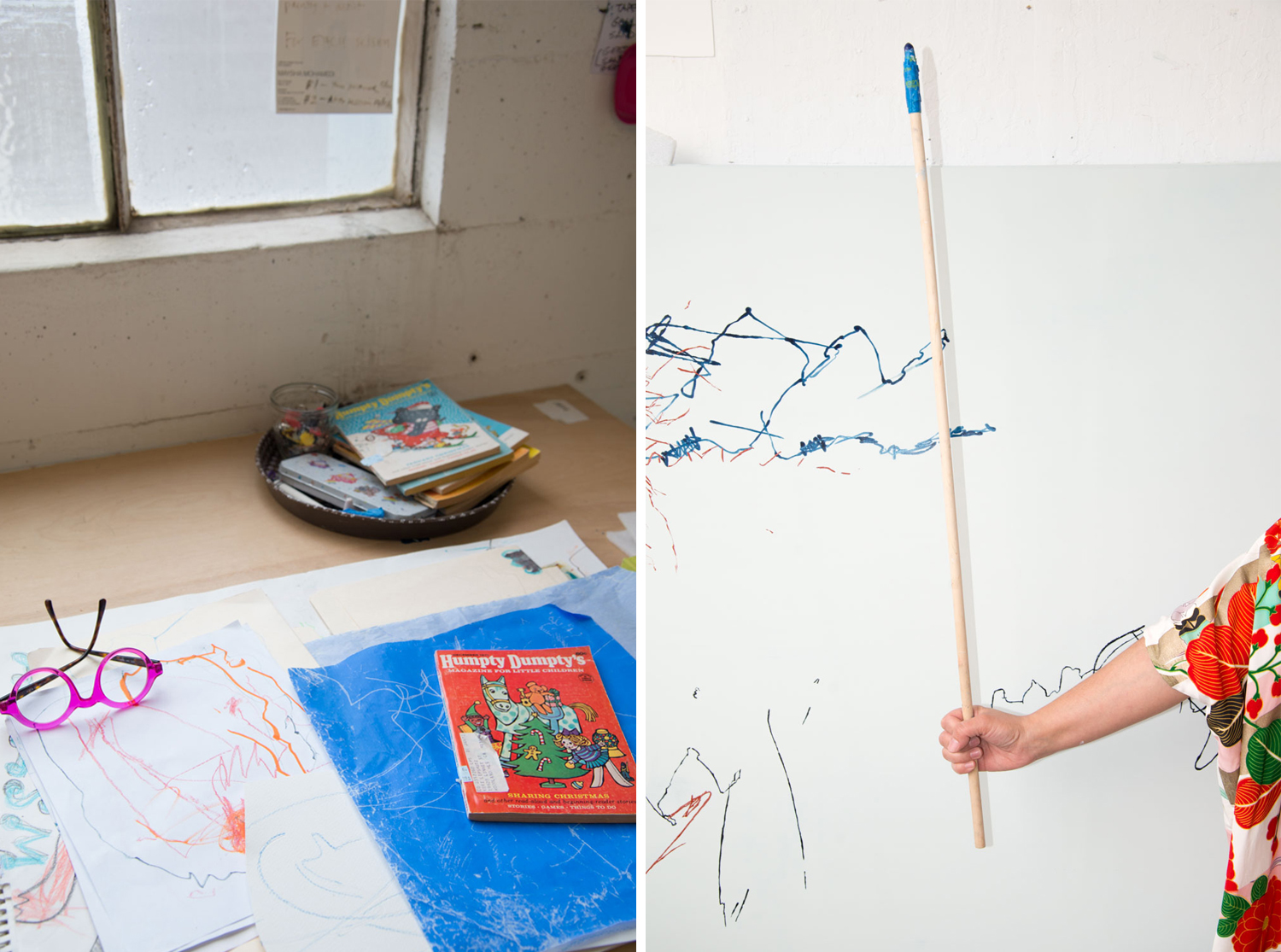
She pours relatively thin oil paint directly onto the panels in wide lines, refining them with her gloved hands. She also uses homemade tools (I got to handle two of these: a paper clip and a jumbo crayon attached to a long dowel.) Moving around the paintings, the marks she makes are literal expressions of how her bodily presence influences her works.
This aerobic, durational process, as well as Mohamedi’s “investment” of ideas in these paintings, make them, for me, narrative in two senses. One is simply the somatic, gestural, aerobic, conceptual tale of Maysha Mohamedi making a painting: her tools, her movements, her hands. Her abstract paintings also infer story through titles, and the emotional returns on the “one idea” in which she invests.
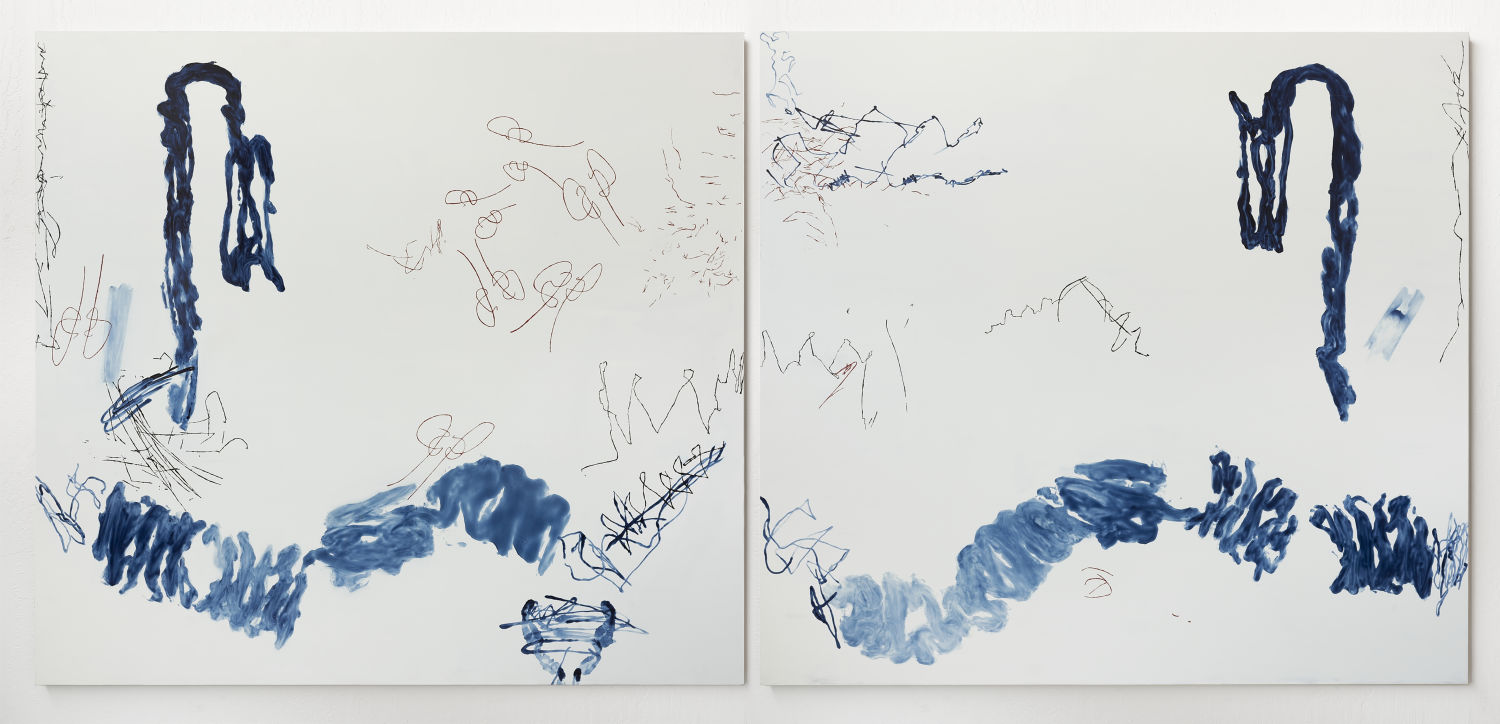
Looking at the extraordinary diptych Bleeding Green Below 40 Feet, for instance, Mohamedi speaks of the painting’s theme in the context of its origin. While working in an office with scientists at the California Academy of Sciences, Mohamedi learned that humans can’t see red at a certain depth of the ocean. If deep sea divers cut themselves while on the job, they need to be able to recognize their own blood in the water, where it now appears green.
Bleeding Green’s grays and blues, as well as the almost watery quality of the thin oil paint finessed by her fingers, evoke not only the color spectrum and feel of the aquatic, but also a mood of fear, uncertainty and morbidity. The origin story of Bleeding Green also recalls Mohamedi’s own background in the sciences. She trained for years to be a research scientist. Bleeding Green, more than the mere reiteration of a cool piece of science trivia, is also, in part, the story of her life.
These paintings are remarkably non-referential. Mohamedi makes them intuitively, and they are not dependent on previous imagery, nor do they typically comment on the history of art. One exception is Dompteuse (French for “lion tamer”), a painting recently featured in a group show at Bustamante Gill gallery in Los Angeles.
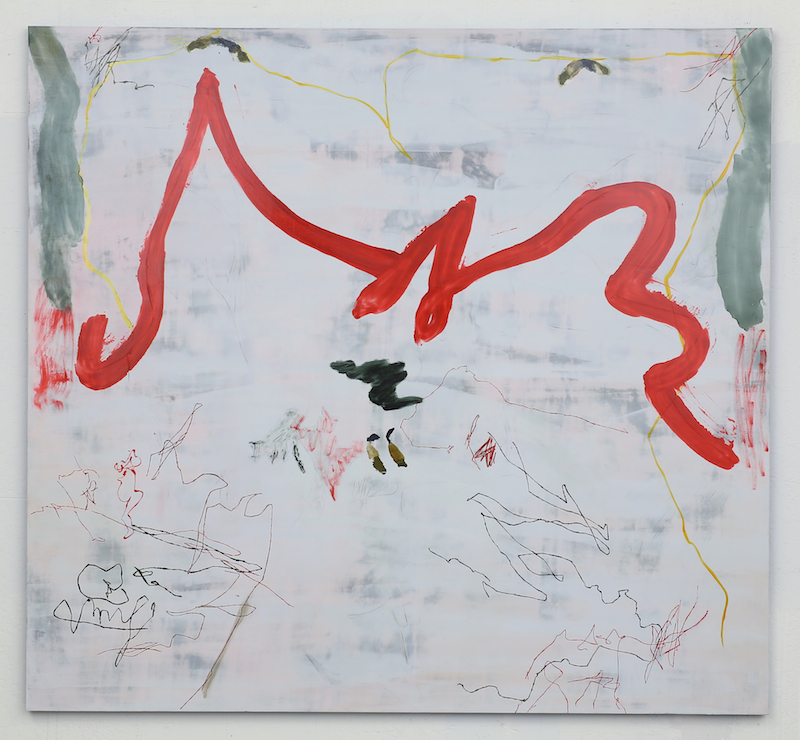
Inspired by an Otto Dix print, Mohamedi’s Dompteuse hearkens only obliquely to an image of an animal trainer. As Mohamedi explained, during the painting’s gestational period, she was in the process of toilet training her son. “I felt like an animal trainer,” she says. The residual imagery and feeling of this trying process resound in the visual field of Dompteuse, while the expressionist artwork inspiring it informed the conceptual process.
Looking at these paintings, I feel the sublime vertigo of learning something new. Mohamedi’s paintings withhold narrative, and yet offer the abundance of feeling we seek in our encounters with narratives. She makes the paintings through a relentless physical and intellectual process unique to her, and yet each panting’s structure is delicate and ornate for all that relentless effort. At once intimate and oblique, approachable and difficult, these paintings warrant patience, a little lingering. It pays off.